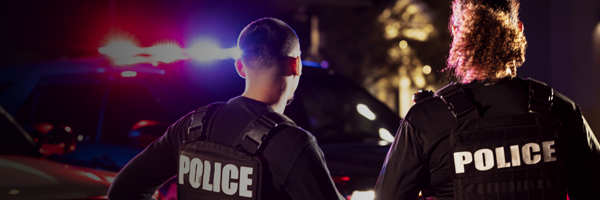Conversations around police reform have taken the stage in communities and police departments across the country. These conversations are critical and serve as opportunities for improvement, but being informed on the issues – both as law enforcement professionals and community members – is crucial for progress and the development of effective reforms.
A large part of this understanding comes from how we view human performance under stressful conditions. Is it policy alone that can change use of force behaviors? Evidence and legal analysis would suggest other factors are equally, if not more so, important. In law enforcement, this includes an analysis of the five pillars of organizational success: While policy is central, people, supervision, training and discipline are also key aspects.
In a recent webinar, “Use of Force: Policy vs. Tactics?” Chief (Ret.) Mike Ranalli and Laura Scarry, partner at DeAno and Scarry, discussed the impact of policy and tactics on use of force in relation to police reform.
Knowing What Graham v. Connor Covers
To understand the way use of force cases are analyzed, we must first look at the seminal case of Graham v. Connor (490 U.S. 386 (1989)) to see how the court views use of force. “Every sworn police officer must understand this case because it is all about determining whether an officer’s use of force is reasonable under the totality of the circumstances the officer was confronted with at the time the force was used,” Scarry explains. If officers know and understand what makes any level of force reasonable, from handcuffing a suspect to using a TASER device to applying deadly force, they will be able to soundly defend their actions in court. Ranalli emphasizes ensuring legitimacy – actions that are both legal and right – is a critical part of this defense.
In determining the reasonableness of the use of force, the court considers several factors, including, but not limited to:
- The severity of the crime at issue
- The threat of the suspect to other officers or bystanders
- Whether the suspect is actively resisting or attempting to evade arrest by flight
While these factors are not all-encompassing, these particular aspects have been and continue to be emphasized since the SCOTUS ruling in Graham. Thorough knowledge of these factors helps provide officers with a starting place as they look to act rightly in tense, dangerous and stressful circumstances.
While having strong, solid and clear policy is necessary, the use of extremely restrictive language can often be counterproductive.
Whether or not a court of law determines that an officer’s use of force was reasonable, it’s important for agencies and officers to recognize that the court of public opinion is often the driving force for change in department policies, and even the law of the land. This is particularly true of “cases that are characterized as ‘lawful but awful,’” Scarry says. These are incidents where an officer’s actions may be legal, but the impression is overtly negative when presented to a jury.
The Graham analysis only covers a tiny sliver of time during an incident: the time at which the officer uses force or deadly force. Graham analysis looks at the question of whether the officer or a third party is at risk of death or serious injury at the exact time force was used. No 20/20 hindsight is allowed and pre-use of force tactics are not considered in that determination. With this in mind, what should those interested in police reform look at to change behavior and reduce uses of force where possible?
Police Reform & Use of Force
For productive conversations around police reform, we must first establish that changing behavior and controlling a police officer’s actions is not done by merely placing more restrictive language in policy. While having strong, solid and clear policy is necessary, the use of extremely restrictive language can often be counterproductive. Scarry provides some key examples of this: “We are seeing some policies actually list specific circumstances in which an officer can use force.” These policies do not take into account the effects of stress on human performance. In high-risk situations, an officer “might not be able to follow those restrictive guidelines or even recall the guidelines in the first place,” she explains.
The myth that policy controls behavior has led many community members to believe that changing policy is the answer. In reality, this creates false expectations for our officers from their communities. When the policy is updated to include the desired restrictive language and officers are unable to comply, distrust is exacerbated, and officers are left confused and lacking confidence in their decisions. Because policy alone cannot answer these concerns, a more comprehensive approach is necessary.
As Graham focuses on the exact instance of use of force, we must delve into the pre-use of force actions, decisions and tactics. As Scarry and Ranalli note, we can do a better job as a profession simply by starting there. Pre-force and pre-seizure conduct can sometimes be altered to avoid the negative consequences of use of force and/or the use of any force altogether. When officers have discretionary time, they need to use it. Training in de-escalation, duty to intercede and other tactics, as well as improved communication between officers, can help contribute to improved pre-force actions and ultimately the policing profession.
To learn more about the role of policy in use of force and police reform discussions, check out our on-demand webinar, “Use of Force: Policy vs. Tactics?”



